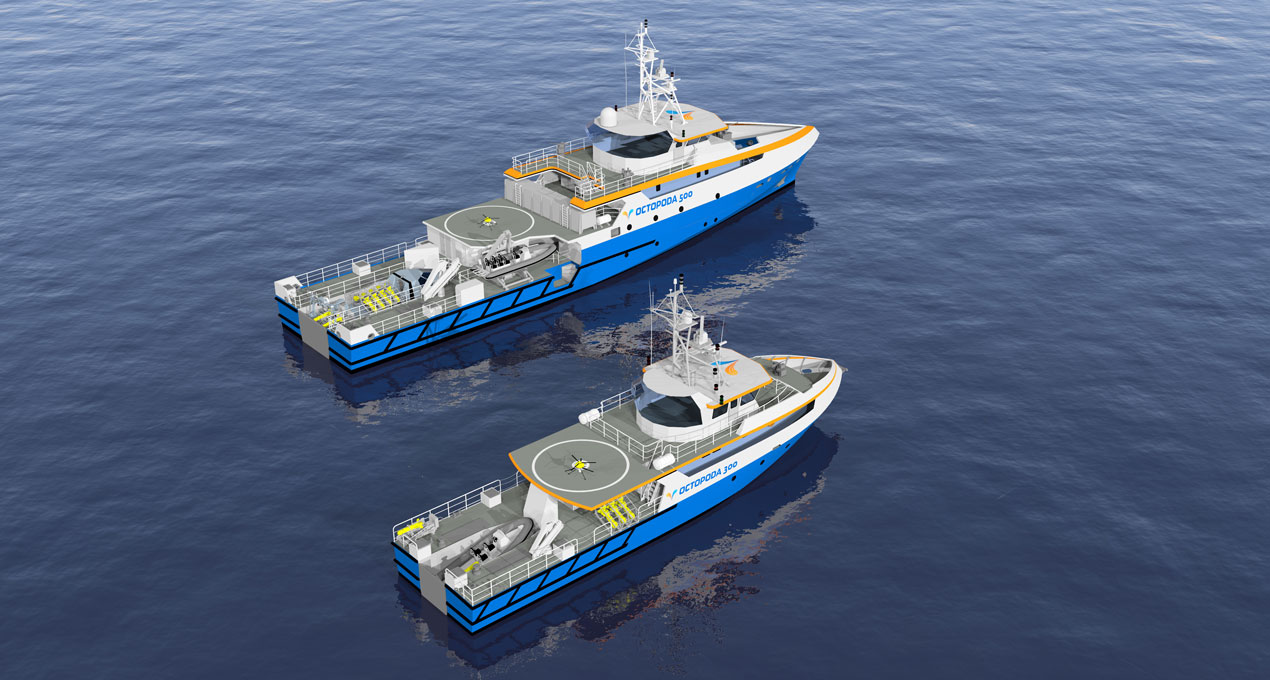ECA Group Launches Fully Integrated Solution For Unmanned Mine Warfare
OCTOPODA vessels from ECA Group are designed for launching and recovering unmanned systems for mine clearance.
08 October 2018

France's ECA Group is better known for the unmanned robots it designs and manufactures that assist with the detection and disposal of sea mines. “The vocation of ECA Group is not to build ships.," stated ECA Group's CEO Guénaël Guillerme . "We are not a shipyard."
But a partnership with naval architects MAURIC has seen the French robotics manufacturer develop a range of ships with specifications similar to those of patrol boats or OPVs, but specifically adapted for mine clearance missions at sea using drones and robotic systems. The idea is to provide a fully integrated package for mine warfare comprising the mother ship and unmanned systems, which should make it easier for navies to exploit unmanned systems without worrying about integrating them with traditional minehunter vessels, which are costly to maintain.
The OCTOPODA vessels, which come in 30m and 50 m specifications, were developed by ECA Group and MARUIC to remain at a safe distance from the minefield. They can be used as a 'mother ship' for deploying and controlling ECA Group’s UMIS system, which is a system of different 'drones 'that can carry out each step of a mine clearance mission: detection, identification and destruction.
As the OCTOPODA operates outside the minefield, ECA Group says it does not have to comply with demanding specifications relating to acoustic and electromagnetic signature, and shock resistance.
ECA Group says the OCTOPODA vessels are based on sea-proven hulls, with ideal seaworthiness characteristics for launching and recovering USV surface drones, UAV aerial drones, underwater AUVs and remotely operated ROVs.
The launch and recovery of unmanned surface and underwater vessels from traditional minehunter vessels has proved challenging for most navies. But ECA says MAURIC’s naval architects focused specifically on two fundamental aspects concerning integration of naval drones: the integration of launch and recovery systems that are effective even in high sea states, and the ergonomics of the drone deployment zones on board the vessel. The OCTOPODA vessels have been designed around these zones (aft deck, drone storage and maintenance hangar, drone system control centre).
Just 30 metres in length, the OCTOPODA 300 can deploy a naval drone system comprising two A9-M AUVs, identification robots and destruction MIDS (Mine Identification and Destruction System) consisting of 2 SEASCANs and 6 K-STER Cs. These underwater robots can be deployed from the OCTOPODA 300 or a 7m RHIB nested in an aft ramp.
The OCTOPODA 300 also comprises a small landing platform for deploying an ECA IT 180 UAV lightweight drone. The design incorporates a specific hangar with direct access to the aft deck and a control centre with a bird’s eye view of the deployment zone, the objectives of which are to simplify handling of the robots and optimise operability of the entire UMIS system.
For navies wishing to deploy a more sophisticated configuration of the UMIS system, MAURIC has developed a 50 m vessel, the OCTOPODA 500, which can launch and recover a 12 metre INSPECTOR 120 USV from an aft ramp. By adding the USV, ECA Group says it is possible to deploy AUVs (two A9-Ms, two SEASCANs and 10 K-STER Cs) in autonomous mode to penetrate further into the minefield. The UAV landing platform is larger and therefore makes it possible to land the IT 180 in more difficult sea states.
The OCTOPODA 300 and OCTOPODA 500 will be on show at the ECA Group stand at the EURONAVAL trade fair taking place in Paris Le Bourget from 23 to 26 October 2018.